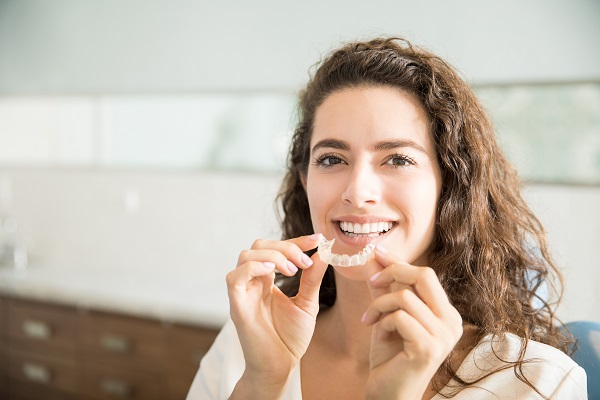Who Need Retainers After Orthodontics Treatments?

You might have to wear a retainer after treatment with orthodontics. Retainers are customized devices that are used to keep teeth in their new positions after teeth straightening treatments. They are typically prescribed to patients who have completed orthodontic treatments, to prevent their teeth from reverting to their old alignment. Having to deal with a retainer after dealing with orthodontics can be an inconvenience, but it is better than having to restart treatment with clear aligners or braces.
The types of retainers used after orthodontics
Anyone who has gone through orthodontics needs a retainer to keep their teeth in their new positions. The severity of the person’s misalignment often determines how long they will have to use retainers. The main types of retainers prescribed by dentists include the following.
1. Bonded
These types of retainers are attached to the patient’s teeth after braces have been removed or after treatment with clear aligners has been completed. They ensure that the teeth stay in their new positions for the first few months following treatment. Bonded retainers are usually prescribed if the patient needs to have a retainer on at all times to prevent their teeth from shifting.
2. Hawley
These are removable retainers that can be taken out for meals or oral hygiene. These devices should be worn according to a dentist’s recommendations. Failing to do so can lead to teeth going back to their old positions or otherwise shifting.
3. Clear plastic
These are virtually impossible to notice when worn. These are clear options for people who have just finished treatment with clear aligners and would rather not have a conspicuous device on their teeth. Clear plastic retainers are designed to fit tightly on teeth, preventing any movement. They should be used as directed by a dentist.
Life with retainers
People who are prescribed bonded retainers must wear them 24/7. The rules are different for those with removable devices. Each patient gets a unique set of instructions that addresses the behavior of their teeth.
Generally speaking, patients are advised to wear retainers all day and night for the first 6 months after their treatment. Once that period has passed, the dentist might reduce wear to only at night during sleep.
People who have had their teeth straightened will likely always need to use a retainer for the rest of their life to prevent their teeth from shifting. Some dentists prescribe permanent lingual retainers that sit in the back of the mouth for this purpose. These are permanently in place but are not visible when the wearer smiles. Failing to use a retainer as prescribed by a dentist can lead to having to start orthodontic treatment all over.
We can straighten your smile
Orthodontic treatment, coupled with the use of a retainer, can get you a straight smile that lasts the rest of your life. Call or visit our Dallas clinic to set up an appointment with our dentist.
Request an appointment here: https://www.highlandsdentaldallas.com or call Highlands Family Dentistry at (214) 491-5362 for an appointment in our Dallas office.
Check out what others are saying about our dental services on Yelp: Orthodontics in Dallas, TX.
Related Posts
While dentists strive to save natural teeth whenever possible, certain situations may require tooth extractions to preserve oral health. When severe damage, decay, infection, or other oral health issues threaten the health of your smile, an extraction can save it. It is important patients recognize the signs of trouble and seek treatment promptly.Extensive tooth decay…
Dental crowns are often costly and require that a dentist remove a significant amount of the tooth's structure to place them. Read on to learn about dental crown alternatives. Other treatment alternatives are sometimes available that are either less expensive or significantly less invasive. Dental crowns are frequently used to restore severely damaged teeth.The following…
Dental crowns are dental restorations that cover teeth entirely for added protection, improved function, and cosmetic purposes. Dental crowns are versatile treatment solutions, and there are many reasons that a dentist may recommend this treatment for patients.The most common reasons that dentists recommend a dental crown are to protect a tooth that is weakened or…
A dental crown can help to fix a variety of dental issues like chipped, cracked, broken, decayed, or deformed teeth. The crown covers up the visible part of the tooth and restores its function. Getting a dental crown placed on a tooth typically involves two trips to the dentist. The first is used to prepare…
